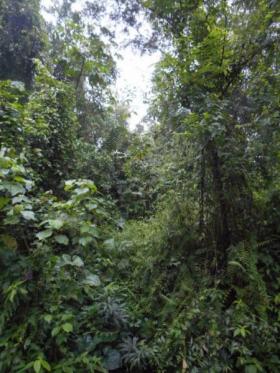|
National Tree Week takes place from 26th November to 4th December in 2016. Celebrate all things tree and branch out with these leafy activities! National Tree Week is organised by the Tree Council - it's the largest tree celebration in the UK and it launches the start of the winter tree planting season.
This is a great opportunity to do something positive for trees in your area.
10 Tree Things to Do
Send a tree through the post
Yes, honestly. There’s a tree (or a bush) for everyone even in a hallway or on a balcony. Rather than send flowers which don’t last, send a tree or bush which will last longer. Some trees/bushes even produce things you can eat…. Tree2mydoor.com is to trees what a florist is to flowers so this Christmas why not send a tree as a gift?
Hunt for ancient trees
Help the hunt for Ancient Trees and help boost the ancient tree inventory. This is a great outdoors activity, aided by the fact you can choose the day (and weather) on which to do it. Your family can go hunting for ancient trees and if you find one, let the Woodland Trust know about it. It helps them lobby to protect ancient trees and care for them, and plan for their proteciton in the future. The Woodland Trust has a leaflet for children with activities to do.
Plant a tree or join a community plant
From small trees to the mighty oak, you can plant a tree in your garden or join a community project and enjoy it for years. Get your community planting trees or volunteer to help on a tree planting near you. This is a great way to meet new people and make friends and get all earthy. The Woodland Trust has more information on community planting
Who lives in woodland and trees?
Wildlife need our woodland and our trees. Discover who lives in our woodlands and trees and our forests. The Wildlife Trust and Woodland Trust both have information about who lives there.
Become a tree surgeon
This could be a great career for anyone who loves the outdoors life and trees! Tree surgeons plant, they fell, they care for and maintain trees and assess their hazards. You can find more info at the National Careers Service website here and The Arboricultural Association has information as well.
Be a tree warden for the Tree Council
The Tree Warden Scheme is a national initiative to enable people to play an active role in conserving and enhancing their local trees and woods. The scheme was founded and is co-ordinated by The Tree Council.
Plant a tree in memory
My wonderful Dad died in 2013. Birthdays and Christmases are difficult. I felt I wanted to mark events such as this in some way so I’ve started planting a tree in Dad’s memory for these occasions and Father’s Day. So far, I’ve planted a tree with the Alderney Wildlife Trust, the Woodland Trust in Sussex and 5 trees in Ecuador with the World Land Trust, all in his name and memory. It took a while for the idea to surface, but I do smile at the thought of trees being dedicated to Dad all over the world. I try to find a link between each tree and Dad. He was a Winnie the Pooh fan, so I planted a tree in Sussex which is Winnie the Pooh country.
Campaign for Trees
The Woodland Trust campaigns for Trees – visit their website to see if there are any campaign's you could support. Examples include being a voice for trees and woods, telling the Trust about threats to ancient woods, and taking action in your community. Find out what you can do to help
Identify trees
How many of us know our oak from our beech? The Woodland Trust has information you can use to discover which tree is which. Visit the woods near you and enjoy them.
Visit Trees for Cities
Trees for Cities is working to make cities greener places in which to live and visit world wide. There are opportunities to volunteer, either as an individual or a corporate entity. Since 1993, over 70,000 people have planted over 600,000 urban trees in parks, streets, schools and housing estates across the UK, as well as internationally.
|
